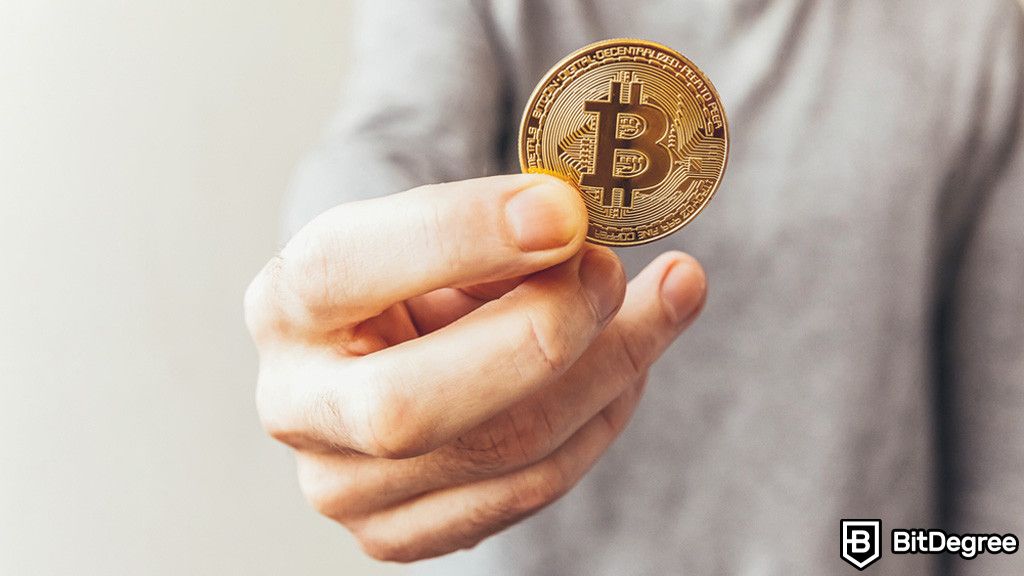Key Takeaways
- Borrowing against Bitcoin allows you to unlock liquidity without selling your assets, but it’s essential to understand the risks involved, such as market volatility and interest rates.
- Platforms like Binance, KuCoin, OKX, and HTX offer flexible loan terms and reliable services for borrowing against Bitcoin.
- While it’s tempting to explore borrowing without collateral, like with flash loans, the risks are high, and it may not be suitable for everyone.
Stop overpaying - start transferring money with Ogvio. Join the waitlist & grab early Rewards NOW! 🎁
If you've ever wondered how to borrow against Bitcoin without selling your assets, you're not alone. I remember when I first explored how to borrow against Bitcoin, and the idea of tapping into my BTC without losing ownership felt like unlocking hidden potential.
Platforms like Binance and KuCoin offer ways to do just that, allowing you to secure a loan using your Bitcoin as collateral. It’s a smart move if you need cash but still want to hold onto your BTC, especially if you believe its value will rise.
In this article, you can expect to learn more about the ins and outs of how to borrow crypto safely and profitably. We'll also explore whether it's possible to borrow Bitcoin without collateral, and why the right platform can make all the difference. Whether you're new to the idea or just looking for better options, I'm here to help you make informed choices.

Did you know?
Subscribe - We publish new crypto explainer videos every week!
How to Store NFTs in 2023 (3 Most Secure Ways Explained)


Table of Contents
- 1. How to Borrow Against Bitcoin: A Comprehensive Overview
- 1.1. How Does the Process Work?
- 1.2. What You Need to Know Before Borrowing
- 2. Why Borrow Against Bitcoin?
- 2.1. Access Liquidity Without Selling Your Bitcoin
- 2.2. Tax Efficiency
- 2.3. Opportunities for Reinvestment
- 2.4. Flexibility and Control
- 3. The Process: How to Borrow Against Bitcoin Safely
- 3.1. Step 1: Choose Your Platform
- 3.2. Step 2: Deposit Your Bitcoin
- 3.3. Step 3: Set Loan Terms and Get Your Loan
- 3.4. Step 4: Repay the Loan and Retrieve Your Bitcoin
- 4. Maximizing Profitability When Borrowing Against Bitcoin
- 4.1. Borrow Only What You Can Afford to Repay
- 4.2. Timing Your Loan
- 4.3. Reinvesting the Loan
- 4.4. Lower Your Interest Payments
- 4.5. Avoid Liquidation
- 4.6. Use the Loan for Productive Purposes
- 5. Borrow Crypto Without Collateral: Is It Possible?
- 5.1. What Are Flash Loans?
- 5.2. How Do Flash Loans Work?
- 5.3. The Risks of Flash Loans
- 5.4. So, Can You Borrow Bitcoin Without Collateral?
- 6. Best Platforms to Borrow Against Bitcoin
- 6.1. Binance
- 6.2. KuCoin
- 6.3. OKX
- 6.4. HTX
- 7. Risks to Consider Before Borrowing Against Bitcoin
- 8. Conclusions
How to Borrow Against Bitcoin: A Comprehensive Overview
Borrowing against Bitcoin might seem like a complex idea at first, but once you get the hang of it, it’s pretty straightforward. I remember how confusing it felt the first time I explored how to borrow Bitcoin. However, once I broke it down into simple steps, it all started making sense. In this section, I’ll walk you through the basics to help you understand how to borrow against Bitcoin effectively.
Latest Deal Active Right Now:When you borrow against Bitcoin, you’re essentially using your BTC as collateral to secure a loan. This means you don’t need to sell your Bitcoin. Instead, you lock it up with a platform like Binance or KuCoin and receive funds in return, either in fiat (like USD) or stablecoins (like USDT). The best part? You can get your Bitcoin back once you repay the loan, along with any interest. This is a great option if you think the price of Bitcoin will rise in the future.
How Does the Process Work?
If you’re wondering how to borrow Bitcoin, here’s a simple breakdown:
- Choose a platform – You’ll need to pick a crypto platform that allows Bitcoin-backed loans, such as Binance or OKX. Each platform has different terms and interest rates, so you’ll want to compare your options.
- Deposit Bitcoin – Once you’ve selected your platform, you deposit your Bitcoin as collateral. The amount you can borrow is usually based on the value of your BTC and the platform’s loan-to-value (LTV) ratio.
- Get your loan – After depositing your Bitcoin, you can borrow either fiat or stablecoins. You’ll need to repay the loan with interest to unlock your Bitcoin again.

Keep in mind that this is a simplified version of how borrowing against Bitcoin works. The specific steps of borrowing crypto can be different depending on what platform you use.
What You Need to Know Before Borrowing
Before you dive into how to borrow crypto using your Bitcoin, it’s important to understand a few things. Usually, you need to provide collateral — usually more than the loan amount to cover price volatility. In most cases, you can't borrow Bitcoin without collateral, as this would expose lenders to too much risk.
However, as we go deeper into the concept of borrowing Bitcoin, I will tell you a method that makes it possible.
Why Borrow Against Bitcoin?
When I first started exploring how to borrow against crypto, one question kept coming up: why do it in the first place? I mean, you already own Bitcoin, so why lock it up as collateral? It turns out there are some pretty compelling reasons to consider this option. Let’s take a look!

Access Liquidity Without Selling Your Bitcoin
One of the main reasons people choose to borrow against Bitcoin is to get quick access to cash without selling their BTC. Let’s say you need money for an urgent expense or a great investment opportunity, but you’re confident that Bitcoin’s value will rise in the future.
Selling your BTC could mean missing out on potential gains. Instead, by borrowing against it, you can keep your Bitcoin and still get the liquidity you need. It’s like hitting two birds with one stone — accessing funds and holding onto your BTC for potential profits down the line.
Tax Efficiency
Another big reason is taxes. When you sell Bitcoin, you might trigger a taxable event, which means you could owe capital gains tax on your profits. You can avoid this by borrowing against Bitcoin. Since a loan isn’t considered income, you don’t get hit with that tax bill. This could be a huge advantage, especially if you’ve been holding Bitcoin for a while and its value has gone up significantly.

Did you know?
Subscribe - We publish new crypto explainer videos every week!
What is Terra Luna? History & Crash Explained (ANIMATED)


Opportunities for Reinvestment
Sometimes, people choose to borrow finance crypto to reinvest in other opportunities. For example, you could use the borrowed funds to buy more Bitcoin or invest in other cryptocurrencies, or even traditional assets. This way, you can potentially profit from both your original Bitcoin holding and the new investment. Of course, this comes with its risks, but for the right person, it can be a strategic way to leverage their assets.
Flexibility and Control
Borrowing also gives you flexibility. Platforms like Binance and KuCoin let you choose loan terms that suit your needs — from short-term to long-term loans with varying interest rates. With so many options available in the borrow finance crypto world, you have control over how much you want to borrow and for how long.
Ultimately, understanding how to borrow against crypto isn’t just about accessing funds — it’s about making smart financial moves that fit your goals.
The Process: How to Borrow Against Bitcoin Safely
When I first looked into how to borrow against Bitcoin, I quickly realized that while the overall process is similar across platforms, the details can vary. Whether you’re using Binance, KuCoin, or another exchange, the basic idea remains the same: you’re using your Bitcoin as collateral to secure a loan. Here are the general steps of how to borrow against crypto, but keep in mind that specific steps might differ slightly depending on the platform you choose.
Step 1: Choose Your Platform
The first thing you’ll need to do is decide which platform to use. Platforms like Binance and KuCoin are popular for borrowing against Bitcoin, but each one has its own features, interest rates, and LTV ratios. The LTV ratio is important because it is used in determining the maximum amount of crypto a borrower can borrow and when will liquidation take place[1]. When I first started, I compared these options carefully to find the one that best suited my needs.
It’s important to check the terms and conditions for each platform, especially around things like interest rates and the maximum LTV ratio, which determines how much you can borrow based on the value of your Bitcoin.
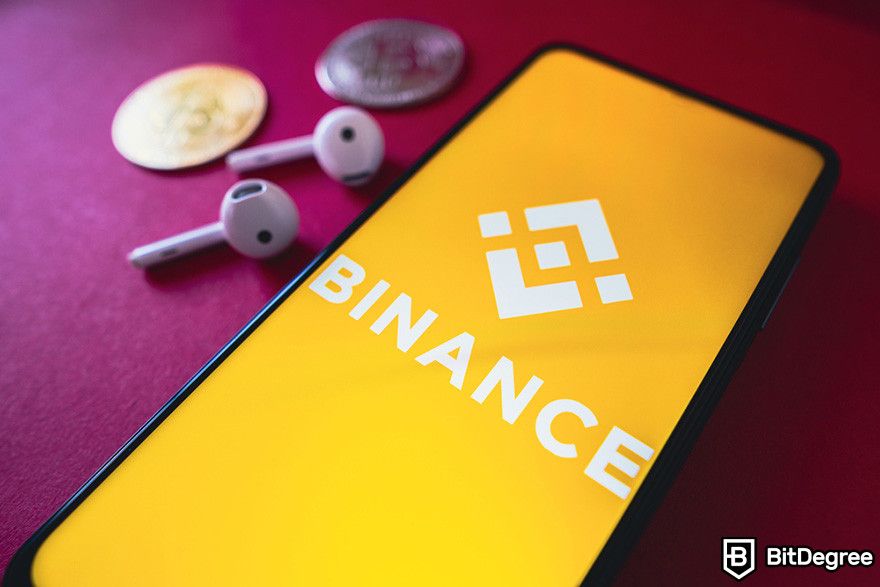
Step 2: Deposit Your Bitcoin
Once you’ve chosen your platform, the next step is to deposit your Bitcoin into your account. This Bitcoin will act as collateral for your loan. The amount of Bitcoin you need to deposit depends on the LTV ratio offered by the platform.
For example, if you’re allowed to borrow up to 50% of your Bitcoin’s value, you’ll need to deposit double the amount of Bitcoin compared to what you want to borrow. This step is crucial because if the value of Bitcoin drops too much, your collateral could be liquidated. That’s why it’s important to keep an eye on your collateral throughout the loan period.
Step 3: Set Loan Terms and Get Your Loan
After depositing your Bitcoin, you’ll need to set the terms of your loan. You’ll decide how much you want to borrow, how long you want the loan to last, and whether you want to receive your funds in fiat currency or stablecoins like USDT.

When I was learning how to borrow crypto, this part felt a bit overwhelming, but most platforms have user-friendly interfaces that guide you through it. Be sure to check the interest rate and repayment terms carefully, as they can vary depending on the platform and the length of the loan.
Step 4: Repay the Loan and Retrieve Your Bitcoin
Once you’ve received your loan, you can use the funds however you like — whether it’s for investing, paying off debts, or making a big purchase. But don’t forget: you’ll need to repay the loan, plus interest, to unlock your Bitcoin. The sooner you repay the loan, the less interest you’ll accumulate. After repaying, your Bitcoin is released from the collateral.
Maximizing Profitability When Borrowing Against Bitcoin
One of the big questions I asked myself when learning how to borrow against Bitcoin was: How can I make sure this loan is actually profitable? After all, borrowing against your BTC comes with its risks. Here are some strategies I’ve learned that could help you make the most of your loan. But first, a quick disclaimer: I'm not here to give financial advice! The key is to use the funds wisely, manage your loan responsibly, and think long-term.
Borrow Only What You Can Afford to Repay
It might sound obvious, but it’s easy to get caught up in the excitement of borrowing against crypto and overextend yourself. Remember, this is still a loan, and you’ll have to repay it with interest. If you borrow too much or don’t have a solid plan for repayment, you risk losing your Bitcoin collateral.

When I first explored how to borrow crypto, I made sure to start with a smaller amount. This way, I could comfortably repay the loan without stressing about market fluctuations or unexpected costs. The trick is to only borrow what you absolutely need, and what you know you can repay — even if Bitcoin’s value drops.
Timing Your Loan
One of the key strategies I’ve found for maximizing profitability is timing. Since you’re using Bitcoin as collateral, it’s essential to think about market conditions before taking out a loan. Borrowing when Bitcoin’s price is relatively stable or on the rise can give you a bit more peace of mind.
That’s because, in a falling market, the value of your collateral could drop, triggering a liquidation event if it falls below a certain threshold. This is something I paid close attention to when I figured out how to borrow against Bitcoin. It’s about managing risk and ensuring that the market is working in your favor as much as possible.
Reinvesting the Loan
One way to potentially boost the profitability of your loan is by reinvesting the borrowed funds. I’ve seen people take the money they borrow and put it into other high-potential assets, like altcoins or stocks, in the hopes of generating additional returns. This is one of the riskier strategies, but for some, it can pay off if done correctly.

Personally, I’ve always been cautious with reinvesting loan funds, but it can be an effective strategy if you have a strong understanding of the markets and a clear exit strategy. Just remember, the more you leverage your loan, the more risk you’re taking on.
Lower Your Interest Payments
One of the things I’ve learned about how to borrow against Bitcoin is that interest rates can vary depending on the platform and the terms of the loan. Before committing to a loan, shop around on different platforms to compare interest rates and terms. Additionally, some platforms offer lower rates if you’re willing to accept a shorter loan term or pay interest in advance. I’ve found that opting for a shorter-term loan with a lower interest rate can make a big difference in overall profitability.
Avoid Liquidation
This might be the most important point when it comes to borrowing against crypto: always avoid liquidation. As I mentioned earlier, if the price of Bitcoin drops sharply, the value of your collateral could fall below a threshold where the platform decides to sell off your BTC to cover the loan.
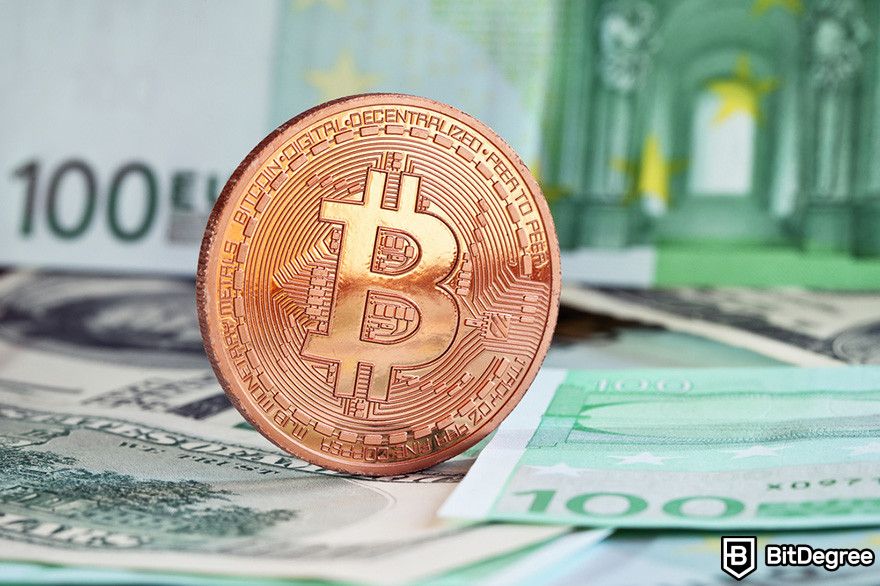
To avoid this, it’s smart to keep an eye on your LTV ratio. If your LTV gets too high because Bitcoin’s price is dropping, you can top up your collateral or repay part of the loan to bring it back down. I’ve made a habit of checking my loan’s LTV regularly, especially in volatile market conditions.
Use the Loan for Productive Purposes
Finally, to maximize the profitability of your loan, it’s essential to use the borrowed funds for productive purposes. Whether you’re investing in other assets or using them to fund a business, the goal should be to generate a return that outweighs the cost of the loan. When I learned how to borrow against crypto, I made sure to have a clear plan for how I would use the funds. Without a strategy, you risk wasting the borrowed money and getting stuck with a loan you can’t repay.
Borrowing against Bitcoin can be profitable if you do it carefully and with a clear plan. These strategies have helped me make the most of my crypto loans, but as always, it’s important to manage your risk and stay informed about market conditions.
Borrow Crypto Without Collateral: Is It Possible?
Throughout this article, the question of whether it’s possible to borrow crypto without collateral has popped up several times. After all, the idea of getting a loan without locking up your Bitcoin sounds pretty appealing, right? Unfortunately, when it comes to learning how to borrow against Bitcoin, the answer is usually no—you need to provide collateral to secure the loan. That’s the fundamental principle behind most crypto lending platforms.
But there is one exception: flash loans.
What Are Flash Loans?
Flash loans are a unique type of loan in the DeFi space that allows you to borrow crypto without collateral, but they work differently from traditional loans. The catch? The entire loan process—borrowing, using, and repaying the loan—must happen within a single blockchain transaction.
If you can’t repay the loan by the end of the transaction, the whole thing gets reversed as if it never happened. Sounds crazy, right? When I first heard about flash loans, I was intrigued by the possibilities. Imagine being able to borrow Bitcoin without collateral—even for just a moment—and execute a profitable trade.
How Do Flash Loans Work?
The concept is simple in theory but incredibly complex in practice. Flash loans are most often used for arbitrage opportunities, where someone borrows crypto, uses it to buy an asset at a lower price on one exchange, and sells it at a higher price on another exchange—all within the same transaction.
Imagine a high-speed race car driver. They need to quickly refuel their car during a pit stop to stay competitive. A flash loan is similar. In this analogy, the driver represents a user in DeFi, the pit stop is a lending protocol, and the fuel is cryptocurrency.

The driver borrows a large amount of fuel (cryptocurrency) for a short period to quickly refuel their car (execute a transaction). However, they must return the fuel (repay the loan) before the pit stop ends (the block is confirmed). If they fail to do so, they risk losing their initial fuel (funds).
When a user borrows funds through a flash loan, the smart contract that facilitates the loan includes a clause that ensures the loan is repaid in full within the same block. This is usually achieved by:
- Including a repayment clause – the transaction that borrows the funds will include a clause that automatically transfers the borrowed amount, plus a small fee, back to the lending protocol.
- Smart contract enforcement – the smart contract ensures that this repayment clause is executed correctly. If the repayment is not made, the entire transaction is reverted, preventing the user from keeping the borrowed funds.
Essentially, the repayment is built into the loan itself, ensuring that it's executed automatically and immediately. This is what makes flash loans unique and different from traditional loans. Because the loan is repaid immediately, the lender is never at risk, so no collateral is required. However, executing these trades requires a deep understanding of both DeFi platforms and smart contracts, not to mention split-second timing.
The Risks of Flash Loans
While the idea of borrowing crypto without collateral sounds tempting, flash loans are not for beginners. They come with significant risks, and if you don’t know what you’re doing, you could end up losing money.

The biggest risk is in smart contract vulnerabilities. In some instances, flash loans enable attackers to launch malicious operations with a large amount of assets that they do not have[2], resulting in huge losses for platforms and users. For example, Platypus DeFi was hit by a flash loan exploit that caused them to lose over $2 million in assets. Therefore, it is clear that they are best suited for advanced traders and developers who understand how to manage these risks.
So, Can You Borrow Bitcoin Without Collateral?
In the traditional sense, no—you can’t borrow Bitcoin without collateral if you’re looking for a standard loan. The nature of cryptocurrency volatility makes collateral essential to protect lenders. But if you’re well-versed in DeFi and willing to dive into the world of flash loans, then yes, you can borrow crypto without collateral—for a brief moment. Just be aware that this approach carries a lot of complexity and risk.
Best Platforms to Borrow Against Bitcoin
As I started exploring how to borrow against Bitcoin, I quickly realized that choosing the right platform is key. With so many options available, each one comes with its own unique features, pros, and cons. Let me break down some of the best choices that I’ve found helpful for borrowing Bitcoin safely and efficiently.
Binance
When it comes to how to borrow against Bitcoin, Binance is one of my go-to platforms. What I like about Binance is that it's easy to use, and it supports a wide variety of crypto assets for collateral, including Bitcoin. To borrow Bitcoin, all I had to do was navigate to the Binance Loan section, select my collateral, and choose the loan terms.

Binance offers flexible repayment options, and the interest rates are pretty competitive. Plus, with its high liquidity, I’ve found the borrowing process to be quick and straightforward. Whether you’re a beginner or more experienced, Binance is a solid choice for borrowing against your Bitcoin.
KuCoin
KuCoin is another platform I’ve used to learn how to borrow against Bitcoin. What stands out to me about KuCoin is its P2P lending feature, where you can borrow crypto directly from other users. This adds a level of flexibility and sometimes better interest rates compared to more traditional platforms.
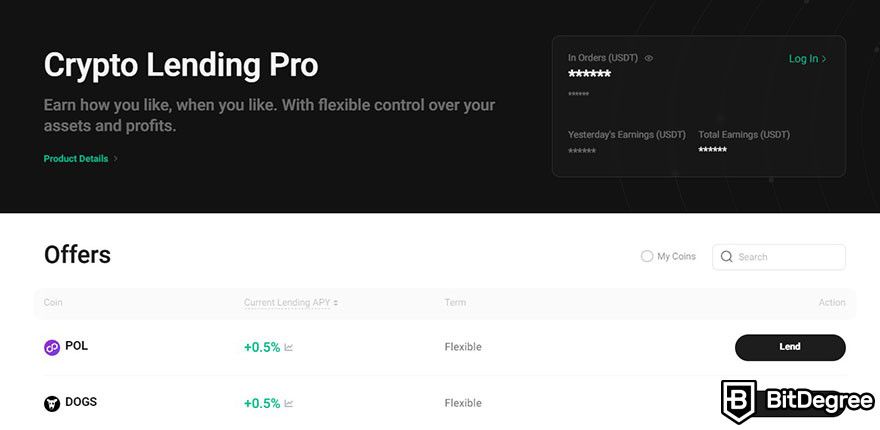
After selecting Bitcoin as collateral, I could choose the terms that suited me best, including the loan duration and amount. The process felt more customizable, and I liked having more control over my loan options. For anyone looking to explore peer-to-peer lending or wanting more tailored terms, KuCoin is a great option to consider when borrowing against Bitcoin.
OKX
OKX’s lending platform caught my attention because it offers a simple way to earn interest on my crypto. Basically, you can deposit your assets into different lending pools, and from there, you receive interest payments based on the pool’s rates. It’s like having your crypto work for you while you hold onto it.
There are two main options: fixed-term lending and flexible lending. With fixed-term, you can lock in your crypto for a set period and know exactly how much interest you’ll earn. Flexible lending, on the other hand, gives you the freedom to withdraw whenever you want, but the interest rates can change, so there’s a bit more uncertainty.
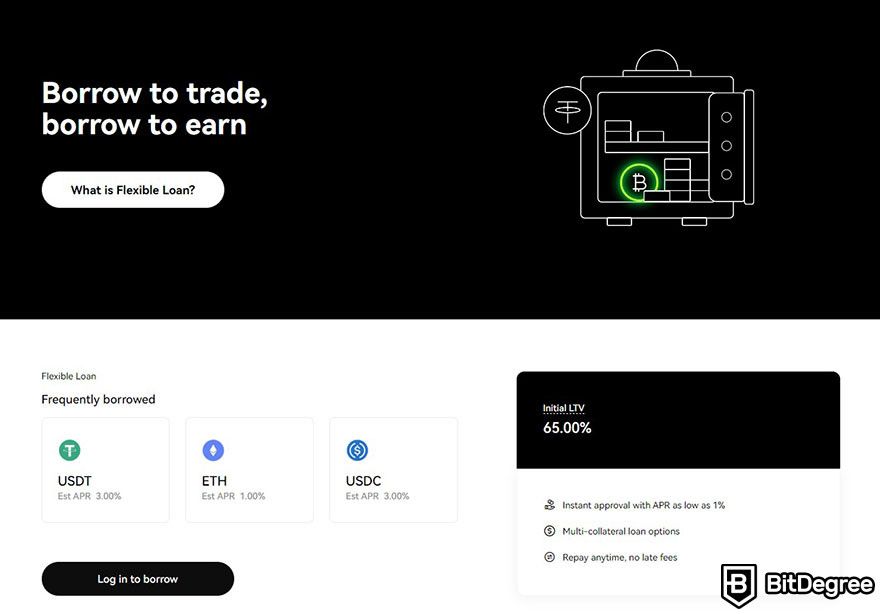
It’s a great way to generate passive income, but I’ve learned to keep in mind the risks, like market fluctuations and the chance of losing some of my initial investment. So while it’s a solid option, it’s important to approach it with an understanding of the potential downsides.

- Secure and reliable
- Accepts fiat currencies
- Lots of trading options
- Reputable exchange
- Accepts fiat currencies
- Offers various trading options

- Huge trading variety
- Regulation-compliant around the globe
- Fair trading fees
- Beginner-friendly
- A wide array of features
- Vast number of different crypto coins & tokens

- Beginner-friendly
- Secure
- Decent trading and withdrawal fees
- Crypto.com Visa Card
- Automated tools & bots
- Ecosystem synergy with CRO
HTX
HTX, formerly known as Huobi, is another platform I’ve found useful for crypto lending. One of the things I appreciate about HTX is its deep liquidity, which means I don’t have to worry about delays when borrowing against Bitcoin. The platform offers flexible loan terms, so whether I’m looking for a short-term loan or something more long-term, I can easily customize the loan to suit my needs.
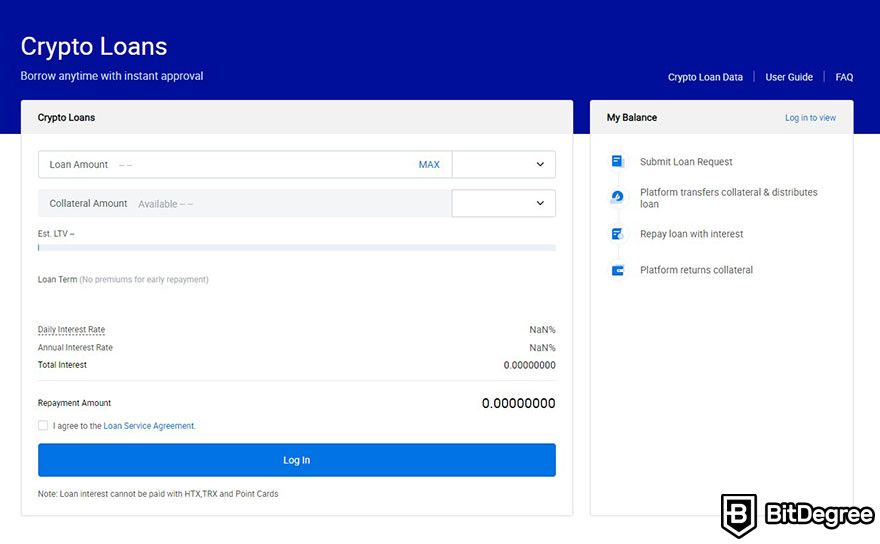
What also stands out to me is the platform’s reliability. HTX has been around for a while, and its reputation for security gives me peace of mind when I use it. Borrowing against Bitcoin on HTX was straightforward—just a few clicks to choose my collateral and terms, and I was ready to go. If you’re looking for a trustworthy platform with flexible options, HTX is definitely worth considering.
Risks to Consider Before Borrowing Against Bitcoin
While you learn how to borrow against Bitcoin, it’s important to consider some of the risks involved. As tempting as it may be to unlock some liquidity from your Bitcoin, borrowing always comes with potential downsides.
First, the biggest risk is market volatility. Bitcoin is known for its price swings, and if the value of your collateral drops significantly, you might face a margin call. That means you’ll need to either add more collateral or risk having your Bitcoin liquidated to cover the loan. I’ve seen this happen to people who didn’t account for market dips, and it can be stressful.

Another factor to consider is interest rates. When you’re learning how to borrow against Bitcoin, it’s easy to focus on the loan amount and forget about the long-term cost of interest. Depending on the platform, rates can vary widely, and if the loan stretches out longer than planned, the costs can add up fast.
Finally, always be mindful of platform security. Always check if the platform is reputable and has solid security measures before committing to a loan. If the platform isn’t secure, your Bitcoin might be at risk, even if you’ve done everything else right. So, while learning how to borrow against Bitcoin can open up new financial opportunities, it’s crucial to weigh these risks carefully before moving forward.
Conclusions
To wrap things up, learning how to borrow against Bitcoin can be a great way to unlock the value of your crypto without selling it. Platforms like Binance and KuCoin offer a range of options to make the process easier and more flexible, depending on your needs. Whether you’re looking for peer-to-peer lending or straightforward loans, there’s something for everyone.
That said, it’s essential to stay aware of the risks, like market volatility and interest rates. Borrowing against Bitcoin is powerful, but it also comes with responsibility. And while the idea of being able to borrow Bitcoin without collateral might seem appealing, flash loans come with significant risks and aren’t for everyone.
If you’re thinking about how to borrow against Bitcoin, just remember to do your research, choose a reliable platform, and only borrow what you can comfortably repay. It can be a useful financial tool, but it’s important to manage it wisely.
The content published on this website is not aimed to give any kind of financial, investment, trading, or any other form of advice. BitDegree.org does not endorse or suggest you to buy, sell or hold any kind of cryptocurrency. Before making financial investment decisions, do consult your financial advisor.
Scientific References
1. Liu F., Packham N., Härdle W. K., et al: Crypto Loans;
2. Wang D., Wu S., Lin Z., et al: Towards A First Step to Understand Flash Loan and Its Applications in DeFi Ecosystem.
